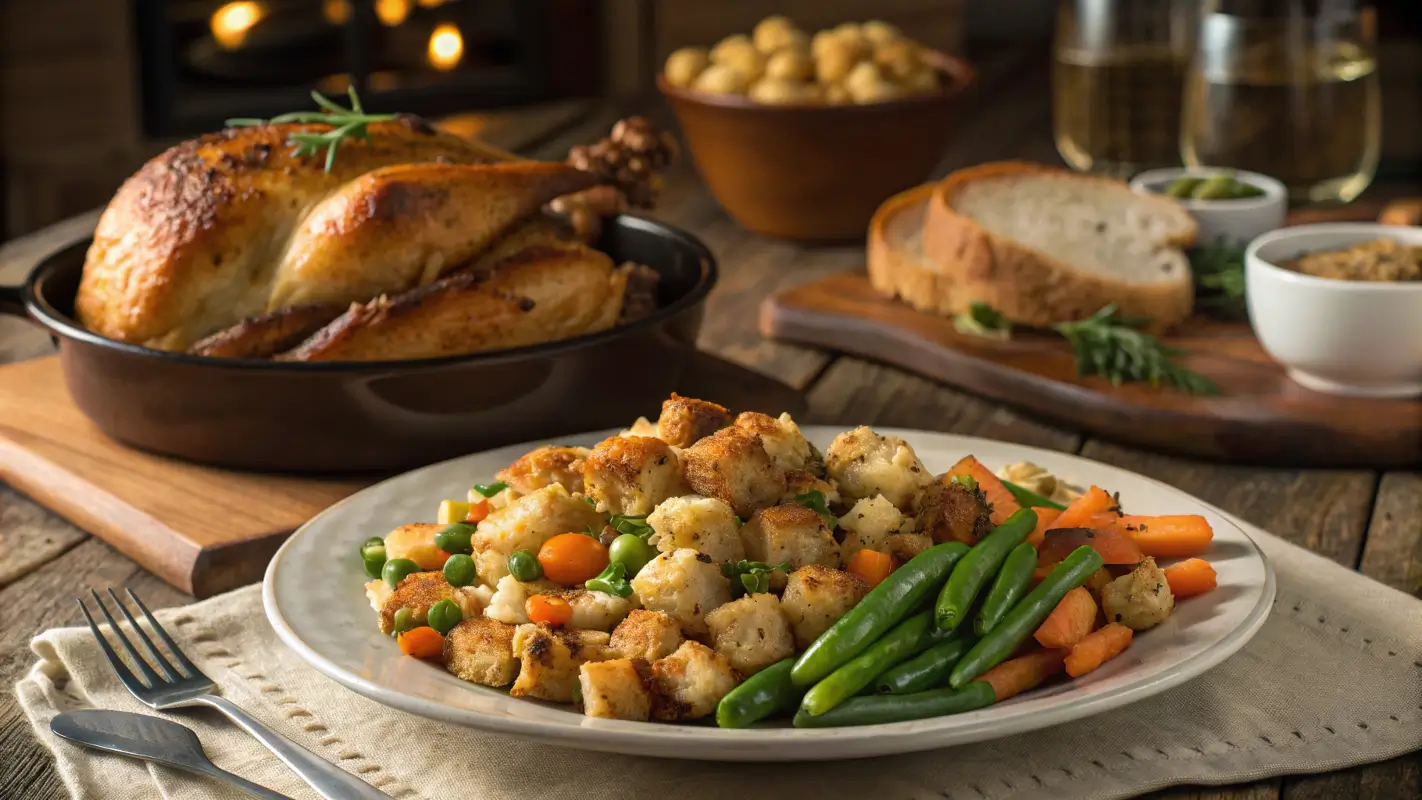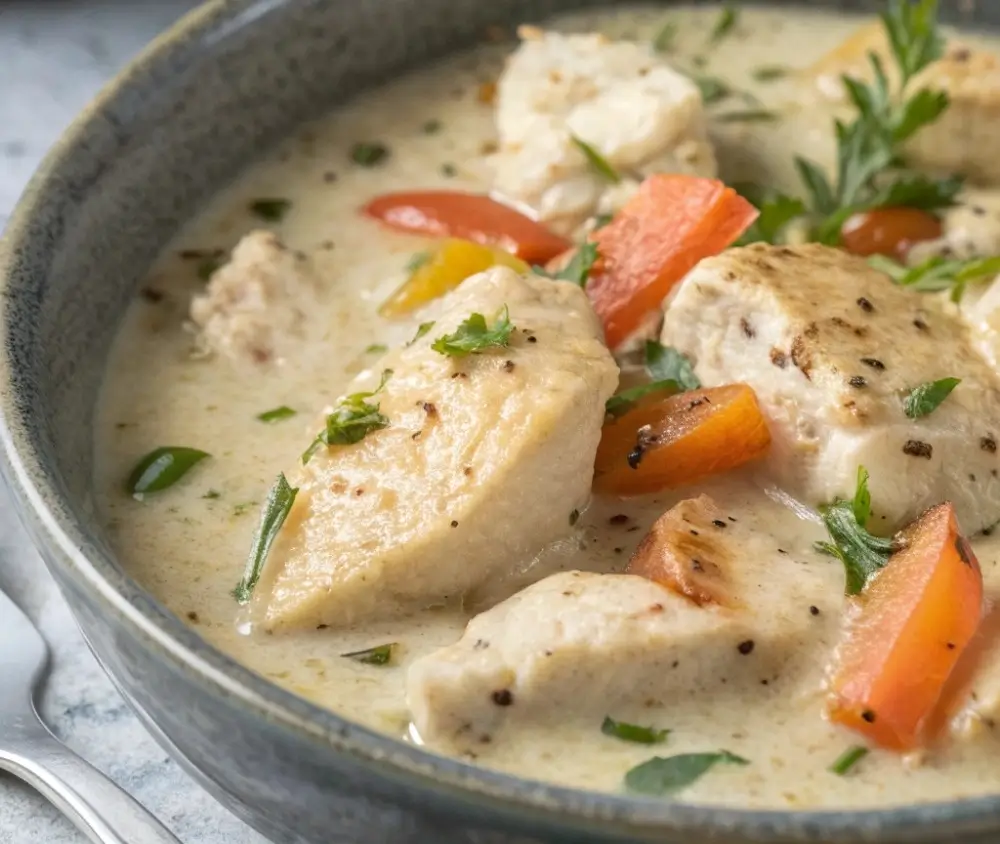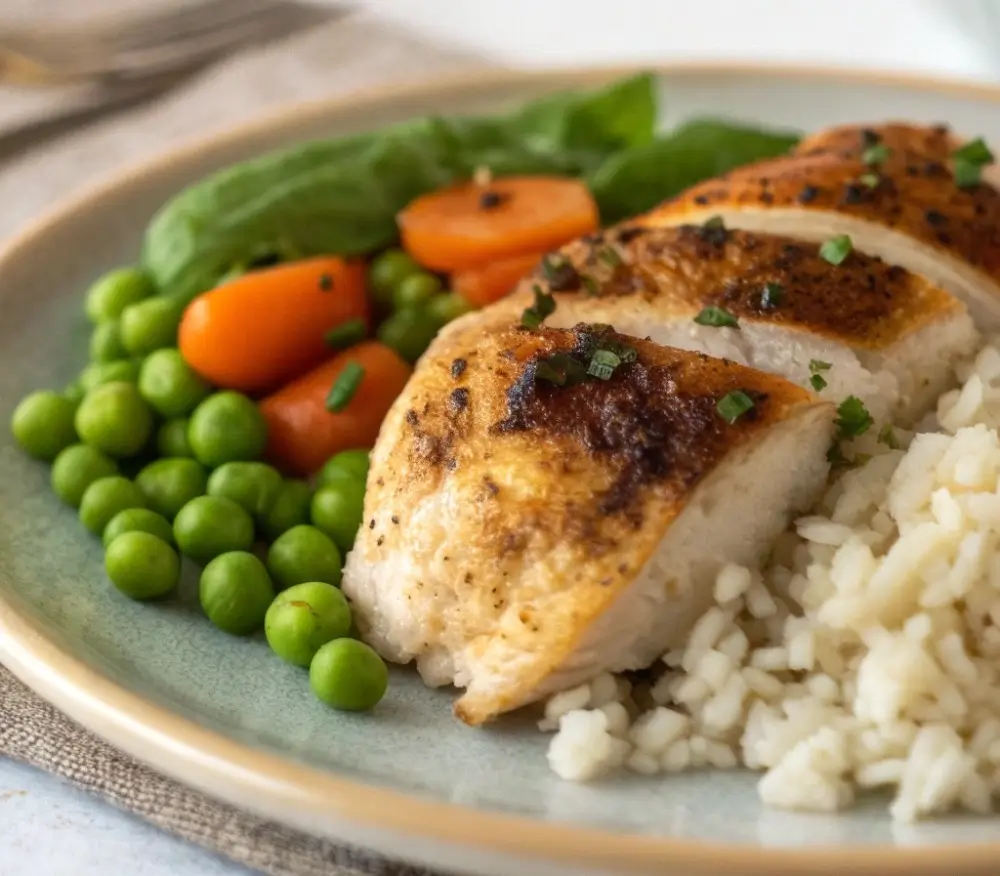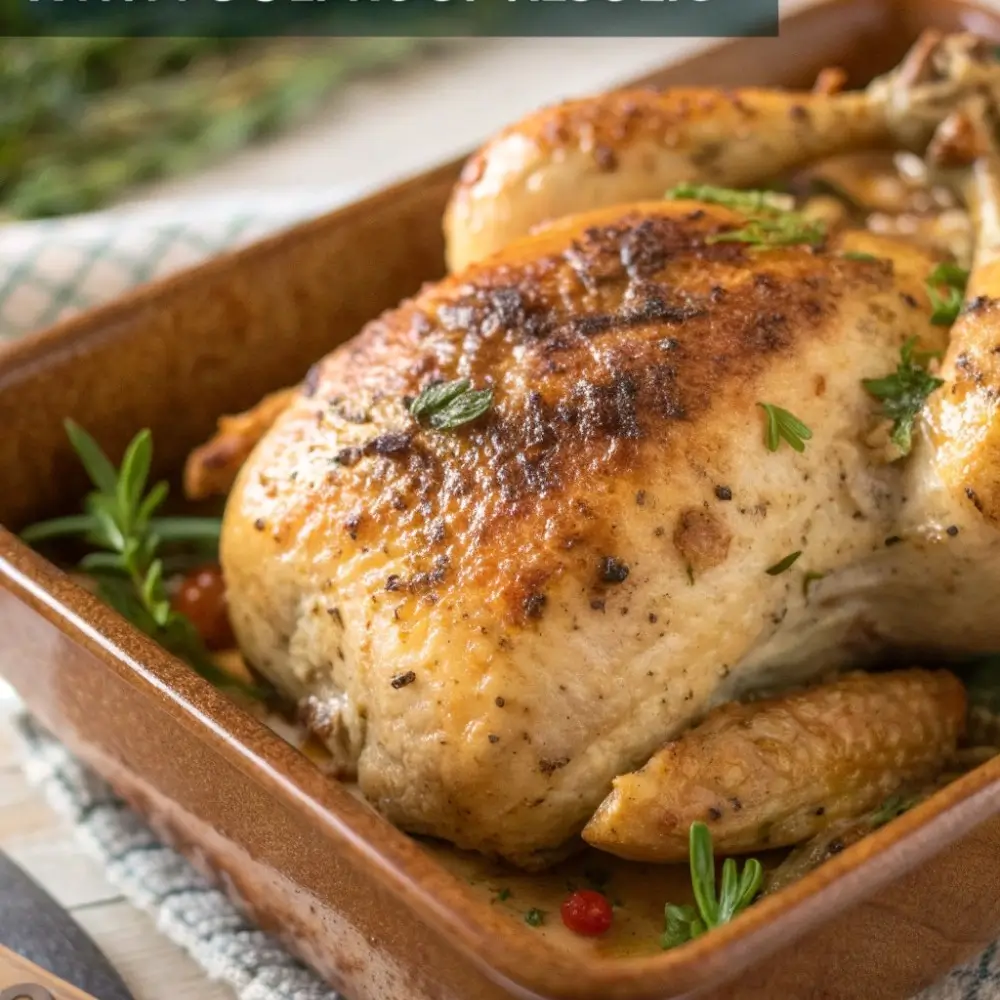Table of Contents
- 1 Understanding Stove Top Stuffing
- 2 Key Ingredients for Stove Top Stuffing
- 3 How to Make Stove Top Stuffing
- 4 Creative Stove Top Stuffing Recipes
- 5 Tips and Troubleshooting
- 6 FAQs About Stove Top Stuffing Recipes
- 7 Nutritional Information and Healthy Variations
- 8 Creative Variations for Special Diets
- 9 Pairing Stove Top Stuffing with Meals
Introduction: The Magic of Stove Top Stuffing Recipes
When it comes to comfort food, few dishes can match the simple satisfaction of a well-made stuffing. Whether you’re preparing a holiday feast or just looking to jazz up your weeknight dinner, stove top stuffing recipes provide an easy, flavorful solution. These versatile recipes can be made in a flash, and they pair well with everything from roasted meats to fresh vegetables. The beauty of stove top stuffing is its simplicity and adaptability, making it the go-to choice for both beginners and seasoned cooks alike.
Understanding Stove Top Stuffing
What is Stove Top Stuffing?
At its core, stove top stuffing is a seasoned bread mixture that’s quickly cooked on the stovetop. It’s a dish that’s particularly popular around the holidays but is perfect for any meal that could use a comforting side. Whether you’re using a store-bought stuffing mix or making it from scratch, stove top stuffing is typically made with bread crumbs, seasonings, and a flavorful liquid (usually broth). It’s often enhanced with herbs, vegetables, and sometimes meat for added texture and flavor.
The beauty of stove top stuffing lies in its versatility. While the classic recipe might stick to a simple combination of breadcrumbs, broth, and butter, there’s room for endless variations. You can turn it into a richer side dish by adding sausage, veggies, or even fruits like cranberries for a bit of sweetness.
Why Choose Stove Top Stuffing?
Stove top stuffing has earned its place in many kitchens because it’s quick, easy, and incredibly satisfying. Unlike traditional oven-baked stuffing, which requires a longer cooking time, stove top stuffing can be prepared in under 30 minutes. For busy weeknights or unexpected guests, this makes it a perfect choice.
Additionally, stove top stuffing is a customizable dish. While the boxed version is widely available, homemade versions allow you to adjust the flavors to suit your personal preferences or dietary needs. With just a few key ingredients, you can create a stuffing that’s perfectly suited to your taste, whether you prefer it to be savory or slightly sweet.
Moreover, stove top stuffing is a crowd-pleaser. Whether it’s for Thanksgiving, a family dinner, or a casual get-together, this dish is sure to complement any main course. Its simplicity doesn’t detract from its flavor—it’s that classic, savory side that everyone loves.
Key Ingredients for Stove Top Stuffing
When it comes to making the perfect stove top stuffing, the ingredients are key to achieving the right flavor and texture. Here are the essentials you’ll need:
1. Bread Base (Breadcrumbs or Cubed Bread)
The foundation of any good stuffing is the bread. You can use pre-made breadcrumbs, cubed bread, or even make your own from leftover bread. The bread should be sturdy enough to hold up when combined with the other ingredients and should soak up the flavors without becoming soggy. While white bread is most commonly used, feel free to explore other varieties like whole wheat, sourdough, or even cornbread for a unique twist.
2. Broth (Chicken, Vegetable, or Beef)
Broth is the liquid component that adds depth and moisture to the stuffing. Chicken broth is the most common choice, but vegetable or beef broth can also be used for different flavor profiles. Be sure to use low-sodium broth if you’re watching your salt intake. The broth is what helps the bread absorb the seasonings and become soft while still maintaining some structure.
3. Butter
Butter is essential for adding richness and flavor to the stuffing. It helps to sauté the onions and other vegetables, making them soft and aromatic. It also gives the stuffing a creamy texture. While butter is the traditional choice, you can opt for olive oil or a plant-based butter substitute if you prefer a dairy-free version.
4. Herbs and Seasonings
The herbs and seasonings you choose will determine the overall flavor of your stuffing. Common seasonings include salt, pepper, garlic powder, and onion powder. For a more herbal stuffing, you can add sage, thyme, rosemary, and parsley. Fresh herbs will give a vibrant and fragrant touch, while dried herbs are more concentrated in flavor. A pinch of dried cranberries or apples can also add a lovely sweet note.
5. Vegetables
Vegetables like onions, celery, and carrots add texture and flavor. They’re sautéed in the butter to release their aromatic oils before being mixed with the bread. You can also consider adding mushrooms, bell peppers, or leeks for extra richness.
6. Optional Add-ins
For added depth, you can include other ingredients like sausage, nuts (like pecans or walnuts), or dried fruits like cranberries and raisins. These ingredients give your stuffing that extra something special, making it more filling and flavorful.
How to Make Stove Top Stuffing
Making stove top stuffing is simpler than you may think, and with just a few key ingredients, you can create a flavorful dish that’s perfect for any occasion. Here’s a step-by-step guide to help you create the perfect stove top stuffing from scratch.
Step 1: Prepare Your Ingredients
First things first, gather your ingredients and have them ready. If you’re using fresh bread, cube it into bite-sized pieces and leave it out for a few hours (or overnight) to dry out. If you’re short on time, you can use store-bought breadcrumbs.
- Chop your vegetables: Dice your onions, celery, and any other vegetables you’re using. Make sure the pieces are roughly the same size for even cooking.
- Melt your butter: Set aside about 1/2 cup of butter (1 stick) for the recipe, or substitute with olive oil for a healthier version.
Step 2: Sauté Vegetables
In a large skillet or saucepan, heat the butter over medium heat. Add your onions, celery, and any other vegetables like carrots or garlic. Sauté the vegetables until they soften and become fragrant, about 5-7 minutes. The butter will not only cook the vegetables but also infuse them with a rich flavor that’ll form the base of your stuffing.
Step 3: Add Broth and Seasonings
Once the vegetables are softened, it’s time to add your broth. Pour in 2 to 3 cups of low-sodium broth (chicken, vegetable, or beef), depending on how much stuffing you’re making. Stir in your herbs and seasonings. For classic stove top stuffing, you can use:
- 1 teaspoon dried sage
- 1/2 teaspoon dried thyme
- 1/4 teaspoon garlic powder
- Salt and pepper to taste
If you’re feeling adventurous, you can experiment with adding rosemary, parsley, or even a pinch of cinnamon for an unexpected depth of flavor.
Step 4: Combine with Bread
Bring the broth mixture to a gentle simmer, allowing it to heat up and release all the flavors. Once the broth is bubbling slightly, add your cubed bread or breadcrumbs to the pan. Stir gently, making sure the bread soaks up all the liquid. Depending on how dry or moist you want your stuffing, you can adjust the amount of broth. More broth will give you a softer stuffing, while less will create a firmer texture.
Step 5: Let It Sit and Absorb the Flavor
Once all the bread has soaked up the broth, cover the pan and remove it from the heat. Let it sit for about 5-10 minutes. This will give the bread time to absorb all the flavors and steam slightly, resulting in a delicious, moist stuffing.
Step 6: Finish and Serve
Give the stuffing a final stir before serving. Taste and adjust the seasoning, adding extra salt or herbs as needed. If you prefer a crispier texture, you can transfer the stuffing to a baking dish and bake it in a 350°F (175°C) oven for 15-20 minutes. This will create a slightly crunchy top while keeping the inside moist.
Step 7: Enjoy!
Your stove top stuffing is now ready to be served! Pair it with roasted chicken, turkey, or any of your favorite comfort foods. It’s the perfect dish for holidays, gatherings, or as a satisfying weeknight dinner side.
Creative Stove Top Stuffing Recipes
While the classic stove top stuffing is beloved for its simplicity, sometimes it’s fun to mix things up with new and exciting twists. These creative variations will take your stuffing from ordinary to extraordinary, and the best part is, they’re all incredibly easy to make!
1. Sausage and Apple Stove Top Stuffing
For a savory-sweet stuffing, add sausage and apples to the mix. The sausage adds rich, hearty flavor, while the apples bring a touch of natural sweetness.
Ingredients:
- 1 pound sausage (mild or spicy, depending on preference)
- 2 apples, diced (Granny Smith or Honeycrisp work well)
- 1/2 cup dried cranberries
Instructions:
- Brown the sausage in a pan and break it up into crumbles.
- Add the diced apples to the pan and sauté for a few minutes until softened.
- Follow the basic stove top stuffing recipe, incorporating the sausage and apple mixture into the bread and broth mixture.
This variation adds both a depth of flavor and a slight sweetness that will make your stuffing stand out at any table.
2. Mushroom and Spinach Stove Top Stuffing
If you want to go for a vegetarian version, try a savory mushroom and spinach stuffing. The earthy flavor of mushrooms combined with the freshness of spinach creates a satisfying and hearty stuffing.
Ingredients:
- 2 cups fresh spinach, chopped
- 2 cups mushrooms, sliced (any variety like cremini, button, or shiitake)
- 1 clove garlic, minced
Instructions:
- Sauté the mushrooms in butter until they release their juices and become tender.
- Add garlic and spinach to the pan, cooking until the spinach wilts down.
- Add this mixture to the stuffing after you’ve added the bread and broth. The mushrooms give an umami-packed flavor, and the spinach brightens up the dish.
3. Pecan and Cranberry Stove Top Stuffing
For an extra burst of flavor and texture, add pecans and cranberries to your stuffing. This variation adds crunch from the nuts and a pop of tart sweetness from the cranberries, making it perfect for the holiday season.
Ingredients:
- 1 cup pecans, chopped
- 1/2 cup dried cranberries
Instructions:
- Toast the pecans in a dry skillet until they’re fragrant.
- Stir in the cranberries when mixing in the bread and broth. The pecans add a nice crunch, and the cranberries balance out the savory stuffing with their tartness.
This version of stove top stuffing is perfect for Thanksgiving or any fall-inspired meal.
4. Southwestern Stove Top Stuffing
Add a kick of spice to your stuffing with a Southwestern twist. This variation uses black beans, corn, and chili powder to create a bold, flavorful stuffing that pairs perfectly with grilled meats or Mexican-inspired dishes.
Ingredients:
- 1 cup black beans, drained and rinsed
- 1 cup corn kernels (fresh or frozen)
- 1 teaspoon chili powder
- 1/2 teaspoon cumin
Instructions:
- Add the black beans and corn to your bread and broth mixture, along with the spices.
- This version will bring a zesty, southwestern flavor that adds excitement to your meal.
Tips and Troubleshooting
When it comes to making stove top stuffing, it’s easy to end up with a dish that’s either too dry or too soggy. Don’t worry! With these helpful tips and troubleshooting techniques, you’ll be able to make perfect stuffing every time.
Tip 1: Adjust the Broth Amount
The most common issue with stove top stuffing is getting the right texture. If your stuffing turns out too dry, it means you didn’t add enough broth. On the flip side, if it’s too soggy, you added too much. If this happens, simply adjust the amount of broth next time, starting with less and adding more if needed. Aim for a moist but not soaking consistency.
Tip 2: Use Stale Bread
Stale bread is your best friend when it comes to stuffing. Fresh bread can become too soggy and won’t absorb the broth as well. To avoid this, use bread that’s been sitting out for a few hours (or even a day). If you’re in a pinch, toast your fresh bread cubes in the oven for a few minutes to dry them out.
Tip 3: Season Well
Stuffing is all about the seasoning. Don’t forget to taste your stuffing before serving! Sometimes, the dish needs extra salt, pepper, or herbs. Make sure you’re using the right balance of seasonings like sage, thyme, and garlic powder. You can always add more, but you can’t take it out once it’s in, so season in increments.
Tip 4: Avoid Overmixing
When you add the bread to the broth, don’t overmix. Gently stir the ingredients together to allow the bread to soak up the liquid. Overmixing can cause the stuffing to turn mushy and lose its texture.
Tip 5: Add a Crunchy Top
If you like your stuffing with a little crunch, transfer the stuffing to a greased baking dish after combining all the ingredients. Bake it at 350°F for 15-20 minutes to get a crispy, golden top. You can even add a sprinkling of breadcrumbs or nuts on top before baking for added texture.
By following these tips, you’ll avoid the common pitfalls and make the perfect stove top stuffing every time!
FAQs About Stove Top Stuffing Recipes
1. Can I make stove top stuffing ahead of time?
Absolutely! You can prepare your stuffing up to a day ahead. Simply cook it as per the recipe, let it cool, and then store it in an airtight container in the fridge. When you’re ready to serve, reheat it on the stovetop or in the oven until it’s hot and steamy. This makes it a convenient dish to prepare in advance for busy holidays or gatherings.
2. Can I make stove top stuffing without broth?
While broth adds a lot of flavor, you can substitute it with water, vegetable juice, or even a little bit of milk for a different taste. Keep in mind that water won’t provide the same rich taste as broth, so you may need to add extra herbs and seasonings to make up for it.
3. How can I make stove top stuffing vegetarian?
Making a vegetarian version of stove top stuffing is simple! Just replace the regular broth with vegetable broth and leave out any meat or sausage. You can also add in your favorite vegetables like mushrooms, carrots, and peas to make it hearty and satisfying.
4. Can I add meat to stove top stuffing?
Yes, you can easily make a meat-filled stuffing by adding cooked sausage, turkey, or chicken to the bread mixture. Just sauté the meat with your veggies to bring out the flavors before adding it to the stuffing.
5. How do I store leftovers?
Leftover stove top stuffing can be stored in an airtight container in the fridge for 3-4 days. If you have a large batch, you can freeze the stuffing for up to 3 months. To reheat, simply thaw it in the fridge overnight and warm it on the stove or in the oven until it’s hot throughout.
Nutritional Information and Healthy Variations
Stove top stuffing is often associated with being a rich, indulgent side dish. However, there are ways to make this classic dish a little lighter without compromising on flavor.
Nutritional Information (per serving, 1 cup):
- Calories: 200-250
- Carbs: 30-35g
- Protein: 5g
- Fat: 7-9g
- Fiber: 3g
- Sodium: 500-600mg
These values can vary depending on the ingredients you use, such as the type of bread, broth, and butter. For a healthier version of stove top stuffing, try these substitutions:
Healthy Variations:
-
Use Whole Wheat Bread: Swap out white bread for whole wheat or multigrain bread to increase the fiber content and add more nutrients to your stuffing.
-
Reduce the Butter: Instead of using a full stick of butter, try using olive oil or avocado oil for a healthier fat source. You can also cut the butter in half without sacrificing too much flavor.
-
Low-Sodium Broth: Opt for low-sodium or no-sodium-added broth to reduce the overall salt content in the dish.
-
Add Extra Veggies: Load up your stuffing with more vegetables like mushrooms, spinach, or zucchini for extra vitamins and minerals without adding too many calories.
Creative Variations for Special Diets
When it comes to stove top stuffing, there’s no need to feel left out if you’re following a specific diet. Here are some creative variations that cater to different dietary needs while still delivering on flavor.
1. Gluten-Free Stove Top Stuffing
If you’re gluten-sensitive or following a gluten-free diet, swapping regular bread for gluten-free bread is an easy fix. You can find gluten-free stuffing bread at most grocery stores, or make your own by drying out gluten-free bread slices. Be sure to use a gluten-free broth and check that any seasonings or ingredients used are also gluten-free. This variation still offers the comforting texture and flavor of traditional stuffing, but without the gluten.
2. Low-Carb Stove Top Stuffing (Keto-Friendly)
For those on a keto or low-carb diet, substitute the bread with cauliflower rice or other low-carb alternatives. Cauliflower rice provides a similar texture and absorbs the flavorful broth beautifully. Additionally, you can swap regular butter with ghee or olive oil to maintain the fat content needed for a keto diet. Add a few extra herbs and seasonings to enhance the flavor of the cauliflower-based stuffing.
3. Vegan Stove Top Stuffing
To create a vegan version, start by using vegetable broth instead of chicken or turkey broth. You can also use olive oil or coconut oil instead of butter, and choose a plant-based bread. For added protein, consider mixing in some toasted nuts like walnuts or almonds, or you can add mushrooms to give the stuffing a meaty texture. The result? A rich, plant-based stuffing that everyone can enjoy!
4. Paleo Stove Top Stuffing
For a paleo-friendly stuffing, replace traditional bread with paleo bread or nuts like almonds or pecans. You can also incorporate veggies like carrots, celery, and onions for a more hearty stuffing. Use ghee or coconut oil for fat, and be sure to check that your broth is free from any non-paleo ingredients like preservatives or artificial flavorings.
With a little creativity, your stove top stuffing can be made to suit virtually any diet, all while maintaining the same delicious flavors you know and love.
Pairing Stove Top Stuffing with Meals
Stove top stuffing is a versatile side dish that pairs beautifully with a variety of main courses. Its comforting texture and rich flavor make it an ideal accompaniment for both traditional and modern meals. Here are some perfect pairings to elevate your dinner.
1. Roast Chicken or Turkey
Of course, the classic pairing with stove top stuffing is roast chicken or turkey. The savory stuffing complements the juicy poultry, while the mild flavor of the stuffing allows the roast to take center stage. Whether it’s a holiday feast or a weeknight dinner, this combo never goes out of style.
2. Grilled or Pan-Seared Steak
For those who enjoy a meatier meal, stove top stuffing pairs wonderfully with steak. Whether it’s a tender filet mignon or a hearty ribeye, the savory flavors of the stuffing balance the richness of the steak. Add a side of roasted vegetables for a well-rounded, satisfying dinner.
3. Beef Loin or Roasted Beef
Stove top stuffing also works well with roasted beef or beef loin. The stuffing complements the natural sweetness of the beef, and if you’re using a stuffing with fruits like apples or cranberries, it can add an extra layer of flavor. This pairing is especially great for fall or winter meals.
4. Vegetarian Dishes
For a lighter, vegetarian meal, stove top stuffing pairs nicely with roasted vegetables or a vegetable casserole. The stuffing adds a hearty component to the dish, and it works well with dishes that include squash, sweet potatoes, or Brussels sprouts. If you want to go fully vegetarian, try pairing your stuffing with a creamy mushroom soup or vegetable stew.
5. Fish and Seafood
If you’re craving seafood, stove top stuffing can also be paired with white fish like cod or halibut. The flavors of the stuffing won’t overpower the delicate fish, making it a great contrast to the lightness of seafood. For extra flavor, stuff the fish with a bit of stuffing before baking or grilling.
No matter the occasion or dietary preference, stove top stuffing can seamlessly complement your meal and create a comforting, flavorful experience. Enjoy experimenting with different pairings and flavors to suit your taste!
Learn how fresh herbs can enhance your stove top stuffing recipes by reading this insightful article on The Benefits of Cooking with Fresh Herbs.





